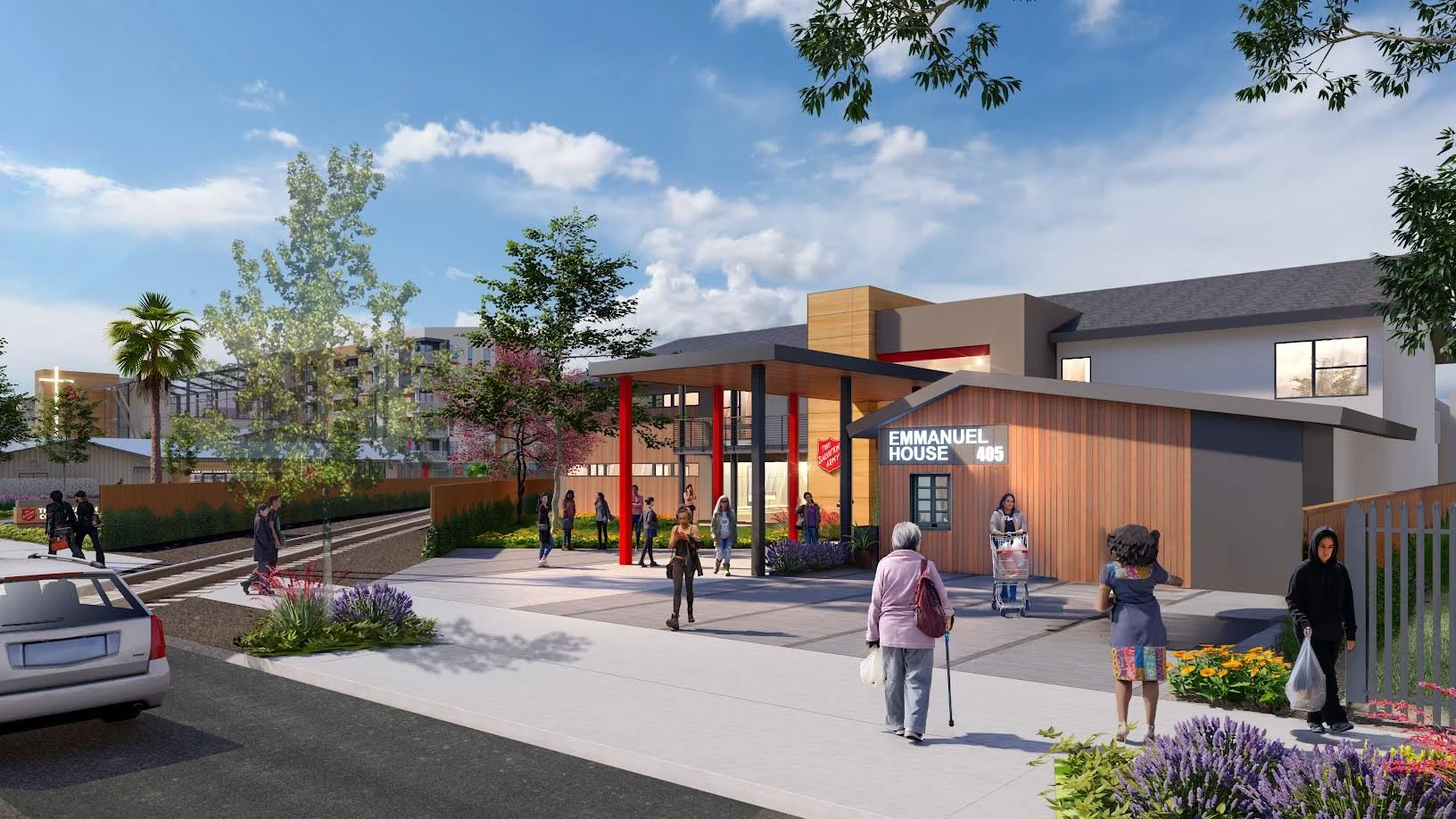☆ SV Salvation Army major: Smart interim housing is treatment-based, transitional, tenacious (1/4)
Image courtesy of Salvation Army Silicon Valley, used with permission.
The City of SJ’s recently turned from a strict Housing First orthodoxy to consider more affordable short-term options—a methodology Salvation Army’s been leading in locally for 60+ years. So we asked Major Daniel Freeman what SJ leaders can glean from their (77% effective) homeless program, focused on “people-changing.” An Opp Now exclusive.
Opportunity Now: What are the typical demographics of people coming into your shelters? And have these changed over time?
Major Daniel Freeman: The overwhelming majority of them are white, followed by Hispanic and black. We have very few immigrants. And lately, we’re seeing both more seniors and young adults (mid–late twenties) in our shelters. However, this may differ in other locations in the county or even the city.
ON: The population skewing both younger and older—how do you make sense of that?
MDF: There doesn’t seem to be one overarching reason. A lot of folks are right on that razor edge, and it only takes a little bump—their social security couldn’t cover housing costs, they lost their job, etc.—to go from being housed to unhoused. The next thing you know, maybe they can’t afford medication or rent, and they’re making some difficult choices. That’s why we offer a range of programs, including those to make sure people stay housed and don’t find themselves on the street in the first place.
There are surprisingly simple reasons, too—like insufficient financial literacy. One elderly gentleman we helped at the shelter had immigrated from Japan when he was young, spent his entire adulthood working here in the States, and then retired. We were confused and asked him, “Why are you at a shelter?” Turns out, he thought he couldn’t afford a place to stay anymore because he didn’t know about social security. He also didn’t have any family around.
So we assisted him with social security, and he was able to get established. He’s in his own housing now. The same is true for 77% of people who graduate from our sheltering program.
ON: To clarify, that percentage finds housing independently afterwards?
MDF: Yes, we use the county's HMIS system to track folks after they leave and see if they go to other housing, and most don't. They stay housed. Some of them still need a food box to supplement, but the majority are good to go after our program.
ON: And recently, your program—going back 60 years in this location—has a lot of eyes on it from local government. With Housing First falling out of favor in San Jose, and drug-permissive housing turning to disaster across the Bay, many leaders are considering different approaches.
Can you walk us through how the program works?
MDF: Our Emmanuel House is a combination program. We do overnight beds that are first come, first serve. I’ll note that our cost per bed ($39.00/night) is incredibly lower than that of most other programs in the county, including emergency shelter ($54.57), residential recovery ($52.74), and other interim housing ($61.18).
We also run a transitional program to help participants figure out how to get their own housing. In this program, they can stay 24 hours or even a maximum of two years, but they typically graduate in six months. And during that time, they're case managed. They take classes like financial literacy, job training, addiction programs, spiritual programs—whatever they need. And then we work with them to find housing or housing solutions.
ON: Is the goal to regularly shift folks from the overnight program to transitional program?
MDF: We want the overnight folks to feel ready for that next phase and begin the process of moving off the streets. If you have someone who’s been homeless for a while, helping them means more than simply giving them a place to live. They often have to learn how to function inside a building again—those basic habits that get forgotten or deprioritized when surviving on the streets. That can take a lot of work.
Stabilizing people with substance abuse and mental health challenges also takes a bit more work. It tends to be a bumpier road. The path to recovery may not be as simple as, say, figuring out social security.
At the end of the day, we're not a housing program per se. We're in the people-changing business. Where we intersect with housing is by providing shelters to help these men—and, soon, women—get to the place where they can get their own housing. We never plan on being the last stop in solutions. We just help people along this path to get to where they want to go.
Follow Opportunity Now on Twitter @svopportunity
We prize letters from our thoughtful readers. Typed on a Smith Corona. Written in longhand on fine stationery. Scribbled on a napkin. Hey, even composed on email. Feel free to send your comments to us at opportunitynowsv@gmail.com or (snail mail) 1590 Calaveras Ave., SJ, CA 95126. Remember to be thoughtful and polite. We will post letters on an irregular basis on the main Opp Now site.

